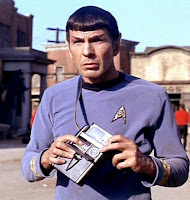While we’re talking about Sunday’s All Things Considered, consider this thing: an item about Plummers Island, a small piece of ground near the banks of the Potomac River. It seems that some folks have catalogued what they call “DNA bar codes” for all the plant species on the island.
Why they call them “bar codes” isn’t clear, and the metaphor doesn’t seem right to me. I might say “DNA fingerprint”, or, perhaps, as a computer-security type, “DNA digest”. In any case, the point is that they’ve taken, from the full DNA sequence, a “marker” that is sufficient to uniquely identify each species. Which, when you think about it, is very cool.
What’s more, they’re looking at doing it super-quickly, even on the fly:
"We have to sequence that DNA to actually identify the plant," Kress says. "We’re not there yet in terms of me picking a leaf off the ground and telling you immediately from its DNA bar code what that is. We would have to take it back to the lab, sequence it. But technology is heading in the direction where we expect [that] what now sits on top of a desk as a DNA sequencer will eventually fit in the palm of your hand."
Within a few years, Kress imagines kids wandering through forests around the world with portable scanners that could analyze a sample of any plant, check it against the DNA database, and know within a few seconds what species they’re looking at.
 Now, what that makes me think about is Star Trek tricorders. I remember how cool I thought it was, when I was 10, that Mr Spock could walk around with a hand-held device, supported by a strap over his shoulder, press a button on it, have it make a modulated whistling noise for a moment, and then announce whatever was appropriate about the surroundings. He could tell us the composition of the rocks and the air, the nature of the plants and animals in the area, the number of humanoids hiding nearby.
Now, what that makes me think about is Star Trek tricorders. I remember how cool I thought it was, when I was 10, that Mr Spock could walk around with a hand-held device, supported by a strap over his shoulder, press a button on it, have it make a modulated whistling noise for a moment, and then announce whatever was appropriate about the surroundings. He could tell us the composition of the rocks and the air, the nature of the plants and animals in the area, the number of humanoids hiding nearby.
“Fascinating,” he would often say, as he operated his tricorder and looked at the readings.
And now, John Kress, Smithsonian Institution botanist, tells us that before too long, we’ll be able to do that — at least a little of that.
Fascinating.






No comments:
Post a Comment